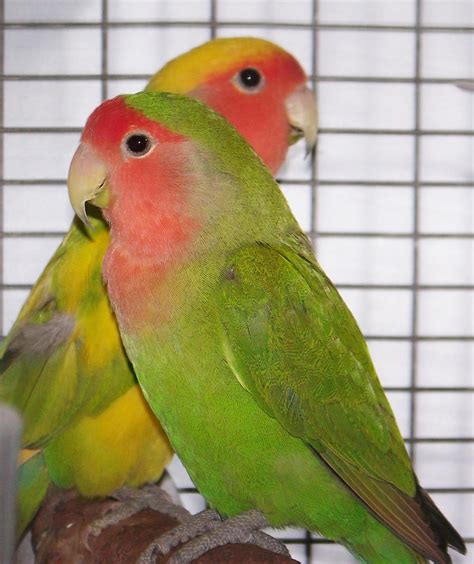Lovebirds are small, colorful parrots known for their affectionate behavior and distinctive chirping. As popular pets, they require proper care and understanding of their unique traits.

1. Essential Care for Lovebirds
1.1. Housing
- Cage size: Provide a spacious cage measuring at least 18 inches wide, 18 inches deep, and 24 inches high for a pair of lovebirds.
- Cage accessories: Include perches, toys, water bowls, and food dishes.
- Cleanliness: Clean the cage regularly to prevent disease and maintain hygiene.
1.2. Diet
- Main food: Pellet food specifically designed for lovebirds should constitute the majority of their diet.
- Fresh fruits and vegetables: Offer small amounts daily to supplement their nutrition, such as apples, bananas, carrots, and spinach.
- Water: Provide fresh water daily.
1.3. Socialization
- Pair bonding: Lovebirds are social creatures that should be kept in pairs.
- Interaction: Handle and play with your lovebirds daily to build trust and bond.
2. Understanding Lovebird Behavior
2.1. Vocalizations
- Chattering: Lovebirds are known for their constant chattering, which can be both charming and noisy.
- Singing: Male lovebirds often sing to attract mates or express contentment.
2.2. Body Language
- Ruffling feathers: A defensive posture that indicates discomfort or aggression.
- Tail wagging: A sign of excitement or interest.
2.3. Breeding
- Nesting season: During spring and early summer, lovebirds may attempt to breed.
- Hatching period: Eggs hatch after approximately 21 days, and chicks leave the nest at around 45-50 days old.
3. Common Health Concerns
3.1. Respiratory Infections
- Symptoms: Sneezing, coughing, and labored breathing
- Causes: Stress, poor ventilation, or bacterial infections
- Treatment: Antibiotics and supportive care
3.2. Feather Plucking
- Symptoms: Loss of feathers, often on the chest or abdomen
- Causes: Boredom, stress, or nutritional deficiencies
- Treatment: Identify and address underlying causes, such as providing more stimulation or adjusting the diet
4. Enrichment and Activities
4.1. Toys and Games
- Chewing toys: Provide various toys for lovebirds to chew on, such as wooden blocks or cuttlebone.
- Puzzle feeders: Hide treats inside puzzle feeders to stimulate their cognitive abilities.
4.2. Flight Exercise
- Supervised flying time: Allow your lovebirds to fly supervised in a safe environment for at least 1-2 hours daily.
5. Additional Tips for Lovebird Owners
- Vet check-ups: Schedule regular check-ups with a veterinarian to ensure your lovebirds’ health.
- Training: Use positive reinforcement techniques to train your lovebirds for tricks or other behaviors.
- Patience and love: Lovebirds thrive in a nurturing and affectionate environment. Provide them with plenty of attention and care.
Conclusion
Lovebirds are delightful companions that require proper care and understanding to thrive. By following these guidelines and providing a safe and stimulating environment, you can enjoy the companionship of these charming parrots for many years to come.





















